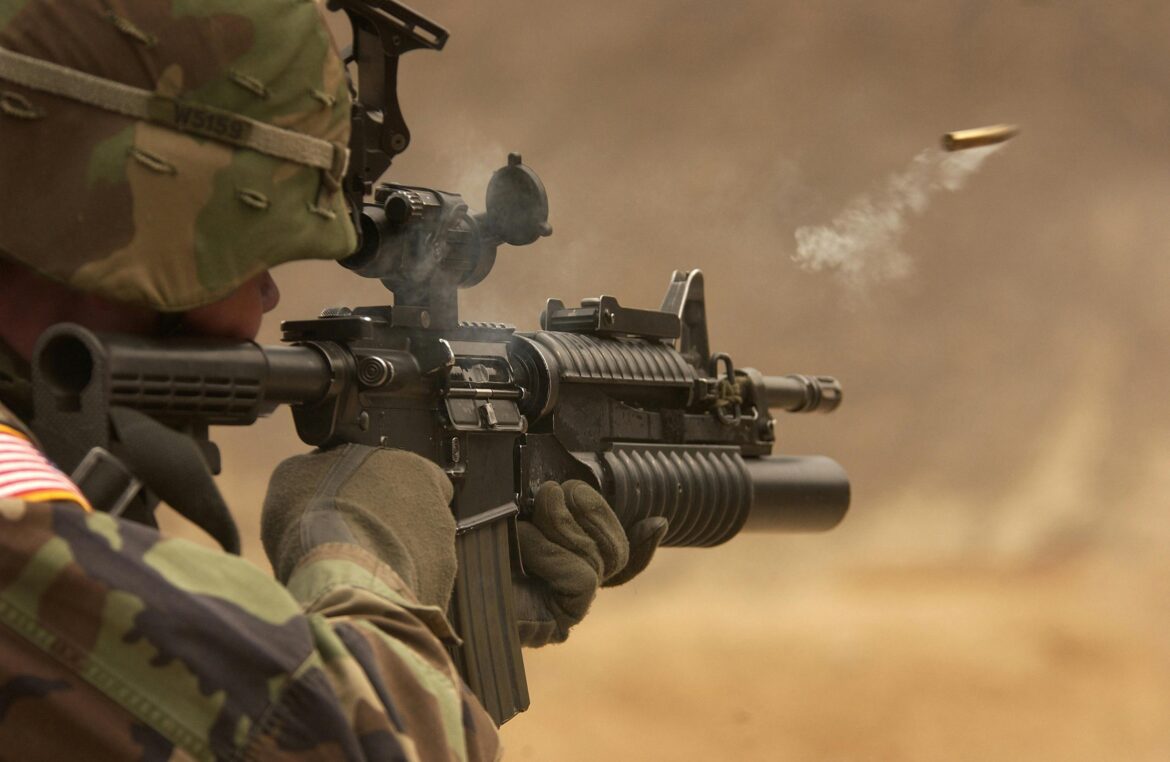Rising Tensions Along the Mekong: What Sparked the Fire?
On 24 July 2025, a long-dormant fault line between Thailand and Cambodia ruptured into violent conflict. What began as a border standoff rapidly evolved into a deadly exchange of artillery, drone strikes, and civilian casualties across multiple provinces. With both sides accusing each other of territorial violations and escalating rhetoric, Southeast Asia finds itself in its most dangerous geopolitical crisis in more than a decade.
Despite decades of diplomatic gestures, the simmering dispute over ancient temples, colonial-era maps, and military posturing erupted into a war that displaced over 168,000 people and resulted in more than 30 confirmed deaths in just four days. While ceasefire talks have now begun under ASEAN’s facilitation, the political and strategic implications of this war run far deeper than the current battlefield.
A Timeline of Conflict: From Skirmishes to War
28 May 2025 – Chang Bok Incident
Tensions first flared when Thai and Cambodian troops clashed near the Chang Bok area in Thailand’s Ubon Ratchathani province. A Cambodian soldier was killed, marking the most serious incident in years. While Thailand claimed it was responding to a border breach, Cambodia alleged provocation.
June 2025 – Political Earthquakes in Thailand
A phone conversation between Thai Prime Minister Paetongtarn Shinawatra and former Cambodian Prime Minister Hun Sen was leaked, allegedly showing informal discussions about sensitive territorial topics. The leak caused a massive scandal in Thailand, prompting coalition partner Bhumjaithai to withdraw from government. This led to Paetongtarn’s suspension by the Thai Constitutional Court and the rise of Deputy PM Phumtham Wechayachai as acting prime minister.
24 July 2025 – War Breaks Out
Early morning reports revealed Thai forces engaging Cambodian troops near the Ta Muen Thom temple complex. Thailand alleged that Cambodian drones and RPG teams had crossed the border; Cambodia responded with denials, stating Thailand initiated the assault.
Within hours, both nations exchanged heavy artillery. Thai F-16s bombed Cambodian positions near Preah Vihear. In response, Cambodian forces used BM-21 rocket systems to target Thai towns, striking a hospital, gas station, and school. The death toll quickly climbed into double digits.
25–27 July 2025 – Martial Law and Mass Displacement
Thailand declared martial law in eight districts across Sisaket, Surin, and Ubon Ratchathani provinces. Over 130,000 Thais were evacuated from the border areas. In Cambodia, roughly 38,000 were displaced from Oddar Meanchey and Preah Vihear provinces.
Infrastructure damage mounted rapidly, with roads, clinics, and power lines reduced to rubble. Schools in both countries suspended operations within 50 km of the front lines.
Historical Roots of a Modern War
Preah Vihear: A Temple, a Trophy, a Ticking Bomb
At the heart of the dispute lies Preah Vihear, a 12th-century Khmer temple awarded to Cambodia by the International Court of Justice (ICJ) in 1962. Although the ruling was binding, Thailand refused to accept the full demarcation of the surrounding land. In 2013, the ICJ ruled again that Cambodia had sovereignty over the temple and its vicinity, but Thailand maintained that parts of the adjacent territory were still under dispute.
Colonial Cartography and Contested Boundaries
French colonial maps from the early 20th century remain a bone of contention. Cambodia references these to assert its claims, while Thailand relies on natural boundaries and treaties signed with the French. The lack of a clearly demarcated and mutually agreed-upon boundary has allowed tensions to simmer for decades.
Past Clashes and Unfinished Business
The 2008–2011 border skirmishes between the two nations resulted in over 30 deaths. ASEAN’s diplomacy helped ease tensions back then, but the core issues remained unresolved. The July 2025 war, though, is far deadlier and widespread, signaling how unresolved historical grievances can still erupt violently even in a modern geopolitical context.
The Human Cost: Displacement, Death, and Trauma
Civilian Toll
By 27 July, at least 34 confirmed deaths had been reported—18 Thai and 16 Cambodian. Among the dead were women, children, and elderly civilians who were caught in shelling. Hospitals in Sisaket and Surin struggled to handle the influx of burn victims and blast injuries.
Casualty figures were likely underreported as many areas remained inaccessible to emergency services.
Displacement Crisis
The humanitarian impact was severe. Thailand relocated over 130,000 people to military-run camps. Cambodia evacuated over 38,000 civilians from its northern border provinces. Relief agencies cited shortages of food, medicine, and clean water, with shelters overcrowded and under-equipped.
Infrastructure Damage
Cambodian rocket artillery destroyed critical infrastructure in Thailand, including two hospitals, several gas stations, and multiple public schools. Thai airstrikes reportedly hit Cambodian border villages, causing blackouts and water shortages. Several Buddhist monasteries near Preah Vihear were damaged, further inflaming local sentiment.
Political Stakes and Nationalism on Both Sides
Thailand: Crisis Meets Conflict
Paetongtarn Shinawatra’s political downfall came at a volatile moment. Acting PM Phumtham, seen as a stopgap leader, seized on the conflict to project authority. Martial law allowed the government to consolidate control, restrict media, and suspend certain political activities.
Cambodia: The Hun Dynasty Rallies the Nation
Prime Minister Hun Manet, son of longtime leader Hun Sen, used the conflict to solidify his authority. Framing the war as a defense of Cambodian heritage and sovereignty, he united fractious domestic groups and garnered support from China for military supplies and diplomatic backing.
ASEAN and the World React
ASEAN’s Mediation Attempt
Malaysia, as the 2025 ASEAN Chair, called for an emergency summit. Ceasefire talks were set in Kuala Lumpur for 28 July. Cambodia agreed unconditionally; Thailand’s response was cautious, favoring bilateral talks.
ASEAN’s credibility is on the line. It failed to prevent the conflict but now seeks to play a decisive role in resolving it.
United States: Trade Pressure Diplomacy
Former President Donald Trump, continuing his post-office diplomatic activism, called leaders from both countries and warned of 36% tariffs on exports to the U.S. unless a ceasefire was agreed upon. Trump likened the situation to India-Pakistan tensions and insisted on swift mediation.
Global Bodies
The UN and Human Rights Watch condemned the use of cluster munitions, which Cambodia accused Thailand of deploying. UN Secretary-General António Guterres called for an immediate ceasefire and safe zones for civilians.
China and Russia urged restraint but refused to take sides, citing non-interference. India and Japan expressed concern due to trade routes and regional stability.
Strategic & Military Analysis
Thai Military Superiority
Thailand holds a clear edge in air power, ground logistics, and surveillance. The Royal Thai Air Force launched over 20 sorties within 48 hours, targeting artillery and supply depots. Navy vessels were deployed to the Gulf of Thailand to deter escalation into maritime zones.
Cambodia’s Asymmetric Strategy
With less advanced weaponry, Cambodia relied on fast deployment rocket systems, drone surveillance, and civilian mobilization. They received indirect support from Chinese-made military hardware and claimed moral high ground by framing their response as “defensive nationalism.”
Potential for Escalation
Though both sides have publicly expressed interest in ceasefire talks, the conflict risks spreading further if proxy actors or non-state militants become involved. Borderland militias and arms smuggling have increased in recent weeks, complicating the situation.
Ceasefire Outlook and Peace Prospects
A successful ceasefire hinges on three factors:
- Mutual face-saving – Both sides must be able to claim diplomatic or symbolic victory to justify de-escalation to their domestic audiences.
- ASEAN’s enforcement capacity – Without binding enforcement tools, ASEAN’s influence is limited to persuasion.
- Economic pressure – Tariffs and suspended trade deals from major partners like the U.S. could push both countries toward compromise.
As of 27 July, preliminary talks in Malaysia have begun, with regional observers cautiously optimistic.
Final Thoughts
The 2025 Thailand–Cambodia war is a textbook example of how unresolved historical tensions, nationalist politics, and unclear borders can ignite into deadly conflict—even in a region known for diplomacy. While early signs suggest diplomatic channels are reopening, the human cost has already been devastating.
Both governments face pressure to resolve the crisis not just militarily, but morally and diplomatically. As ceasefire talks continue, the world watches whether this fragile peace process can hold—or whether this war marks just the beginning of a more volatile era in Southeast Asia.
FAQs
1. Why are Thailand and Cambodia fighting?
The conflict stems from unresolved territorial disputes, especially around the Preah Vihear and Ta Muen Thom temple areas, combined with nationalist politics and recent military incidents.
2. How many people have died in the 2025 war?
As of 27 July 2025, at least 34 people are confirmed dead, with dozens more injured. The actual numbers could be higher due to limited access to frontline zones.
3. What is ASEAN doing about it?
ASEAN, led by Malaysia in 2025, has initiated ceasefire talks in Kuala Lumpur. It aims to mediate diplomatically but lacks enforcement powers.
4. Is this war likely to expand?
While both sides have shown interest in ceasefire talks, the situation remains tense. Regional spillover is possible if diplomacy fails.
5. What’s the global response?
The UN, U.S., and ASEAN have called for restraint. The U.S. has threatened trade sanctions, while China has called for peaceful dialogue without interference.
Resources & References
- Al Jazeera – Live coverage of Thai–Cambodia conflict
- Reuters – ASEAN ceasefire efforts
- The Diplomat – Military comparison analysis
- DW News – Humanitarian impact reports
- The Guardian – Civilian casualties and infrastructure damage
- Wikipedia – Timeline and background of the 2025 conflict
- ASEAN Briefing – Diplomatic context and mediation response
- Thai PBS, Phnom Penh Post – Local reporting from both nations
Disclaimer
This report is for informational and journalistic purposes only. The Breadline Bulletin has verified all data to the best of its ability based on publicly available information as of 27 July 2025. The article does not endorse any political or national position. Readers are advised to consult official government and diplomatic sources for emergency updates.
SEO Meta
SEO Title: Thailand–Cambodia War 2025: Timeline, Causes & Impact
Slug: thailand-cambodia-war-2025-timeline-impact
Meta Description: Full breakdown of the 2025 Thailand–Cambodia War, including its origins, timeline, civilian toll, diplomacy, and ceasefire outlook.


